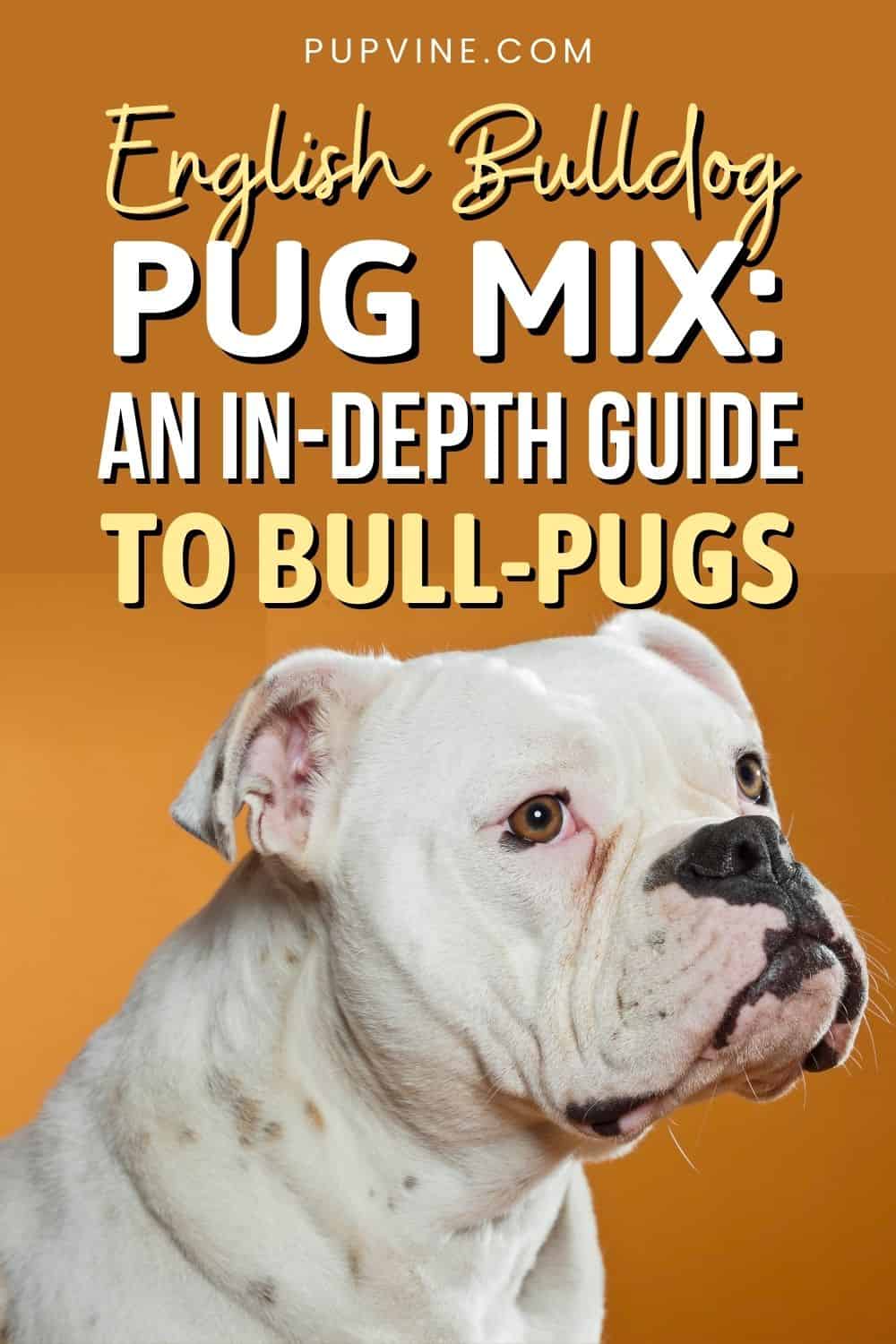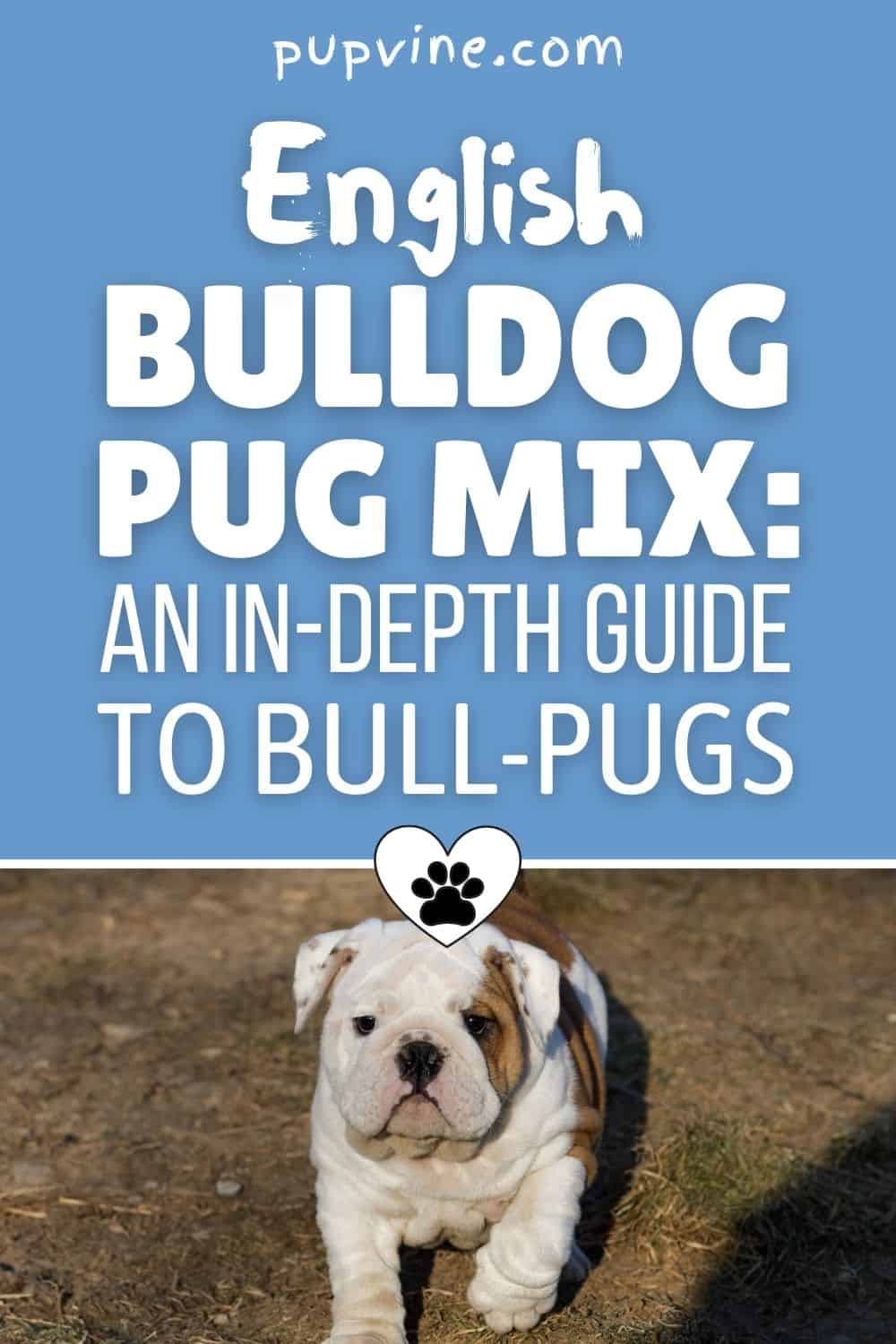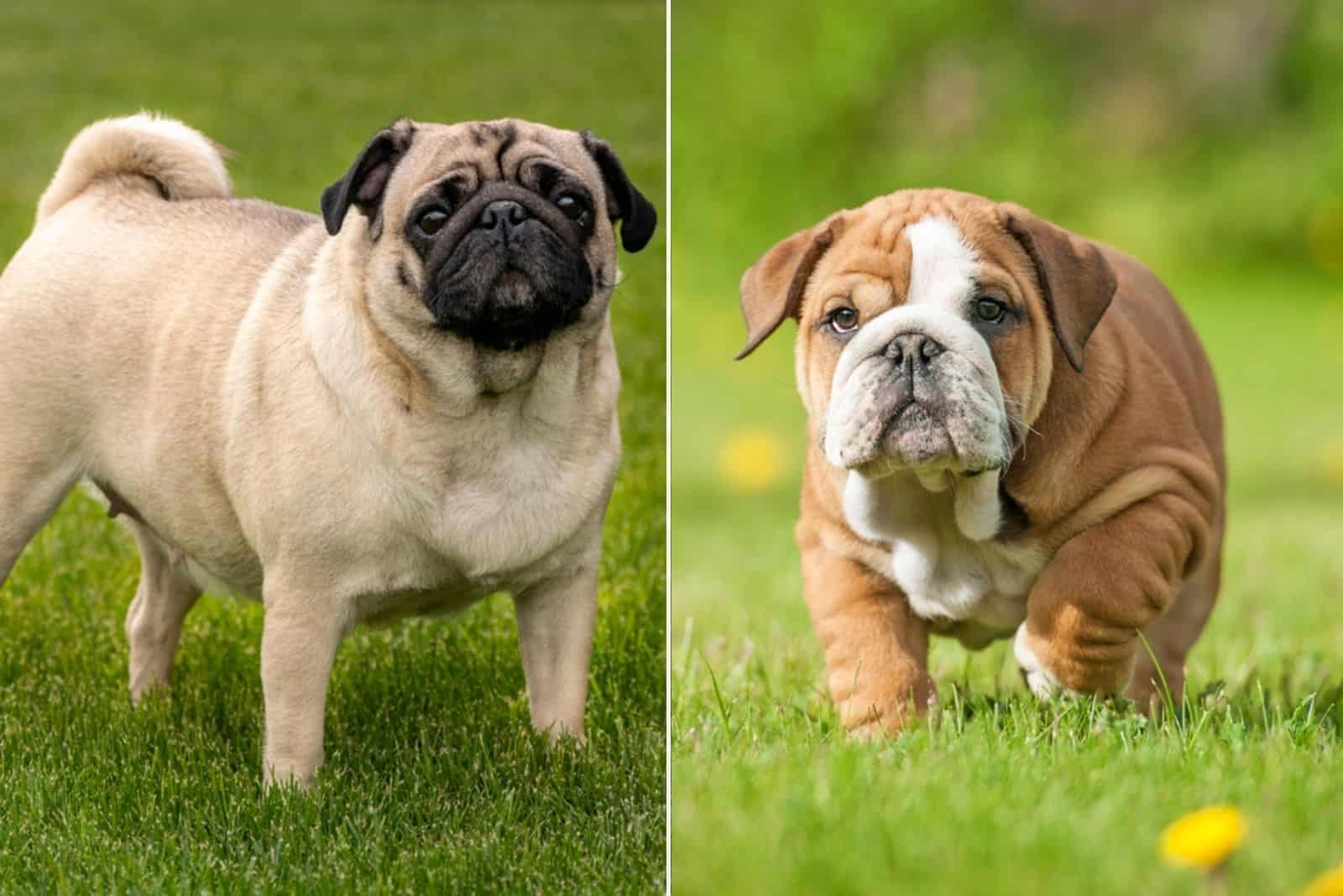When it comes to choosing a dog, there are two kinds of people: those who fall in love with the scrappiest fur-ball that wags its tail the moment they spot it, regardless of its breed and parentage, and those who take their time, possibly with a special breed in mind.
It doesn’t matter which camp you fall into; the fact is that you intend to give one of these loveable creatures a happy, loving home.
What does need to be taken into account, whichever avenue you choose, is that it takes dedication and commitment to care for any dog.
And when purebred dogs are involved, then there are further considerations.
As cute and adorable as these newer breeds are, the selective breeding process increases the risk of genetic diseases and health problems, which means that they will require more care and attention.
If you’re considering getting a Bull-Pug and need some information and advice before going ahead, then the following guide is made just for you!
We’ll start with a breakdown of both breeds, then take a look at the crossbreed mix of the two, along with some advice on caring for this designer dog.
The English Bulldog
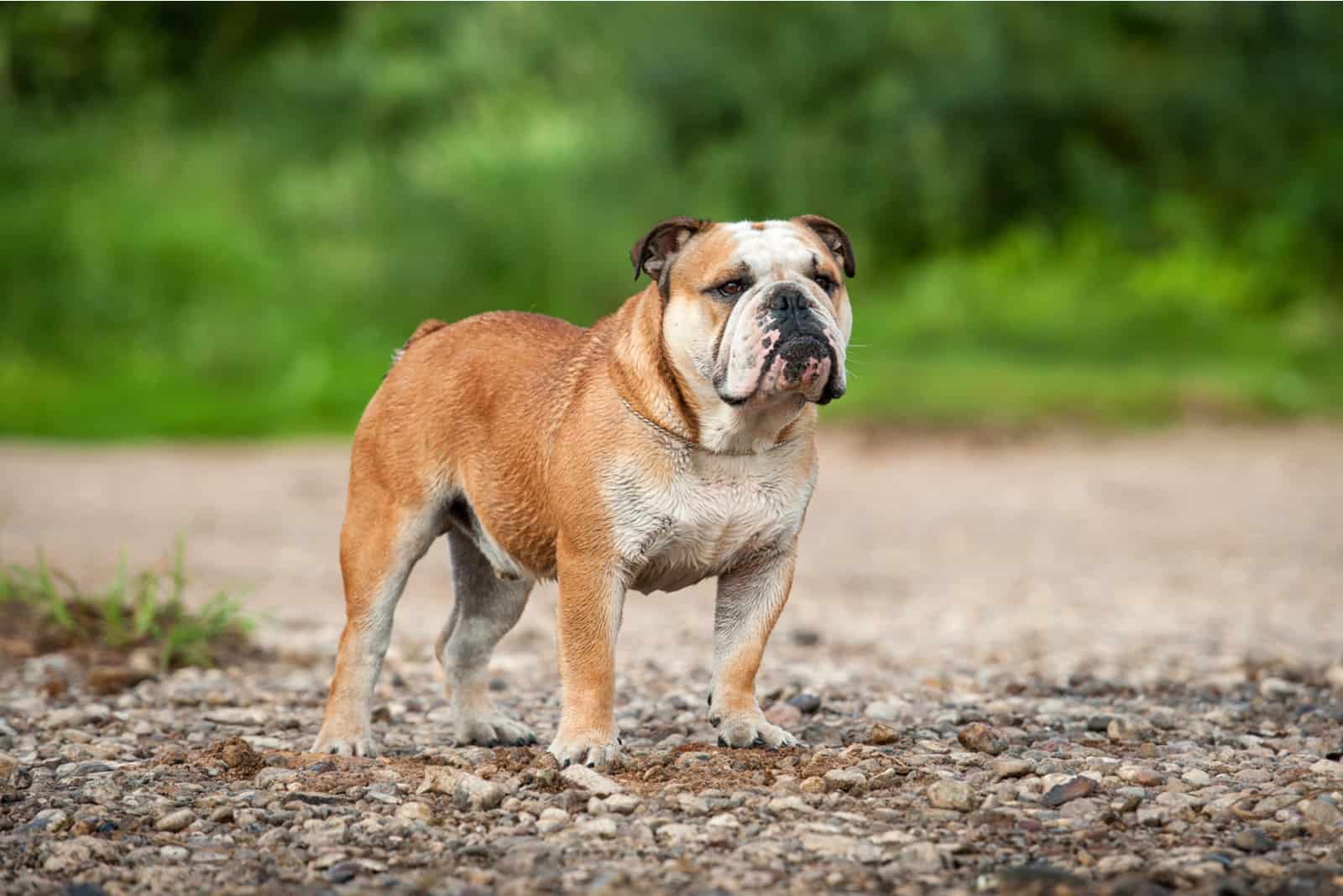
The horrific ‘blood sport’ called bull-baiting was once popular in England from the 15th century, right up until it was banned in 1835.
This grisly spectacle involved a bull (or a bear, and occasionally a chimpanzee riding a horse!) being sent into an arena to fight against several dogs.
Wagers would be placed on which dog brought down the unfortunate beast (or which dog survived the longest).
Obviously, stronger, more aggressive dogs with a high tolerance to pain stood a better chance, so special breeds were developed over time to increase their chances of winning.
The Bulldog was such a breed, specifically designed for aggression, with powerful jaws that would grip the bull’s nose.
The dog would then spin its powerful, muscular body, bringing the poor bull to its knees.
Once this barbaric practice was outlawed, the breed became obsolete and was in danger of dying out.
However, several breeders continued to promote them, gradually breeding the aggressiveness out to produce a calmer temperament. Over the years, they earned their place as a popular family pet — a far cry from their original purpose!
The genes that provided the aggressive nature were instead passed onto fighting-dog breeds, such as the American Pitbull.
These days, the bulldog is physically different from its bull-baiting ancestors. The shorter snout means it doesn’t have the same strength of bite.
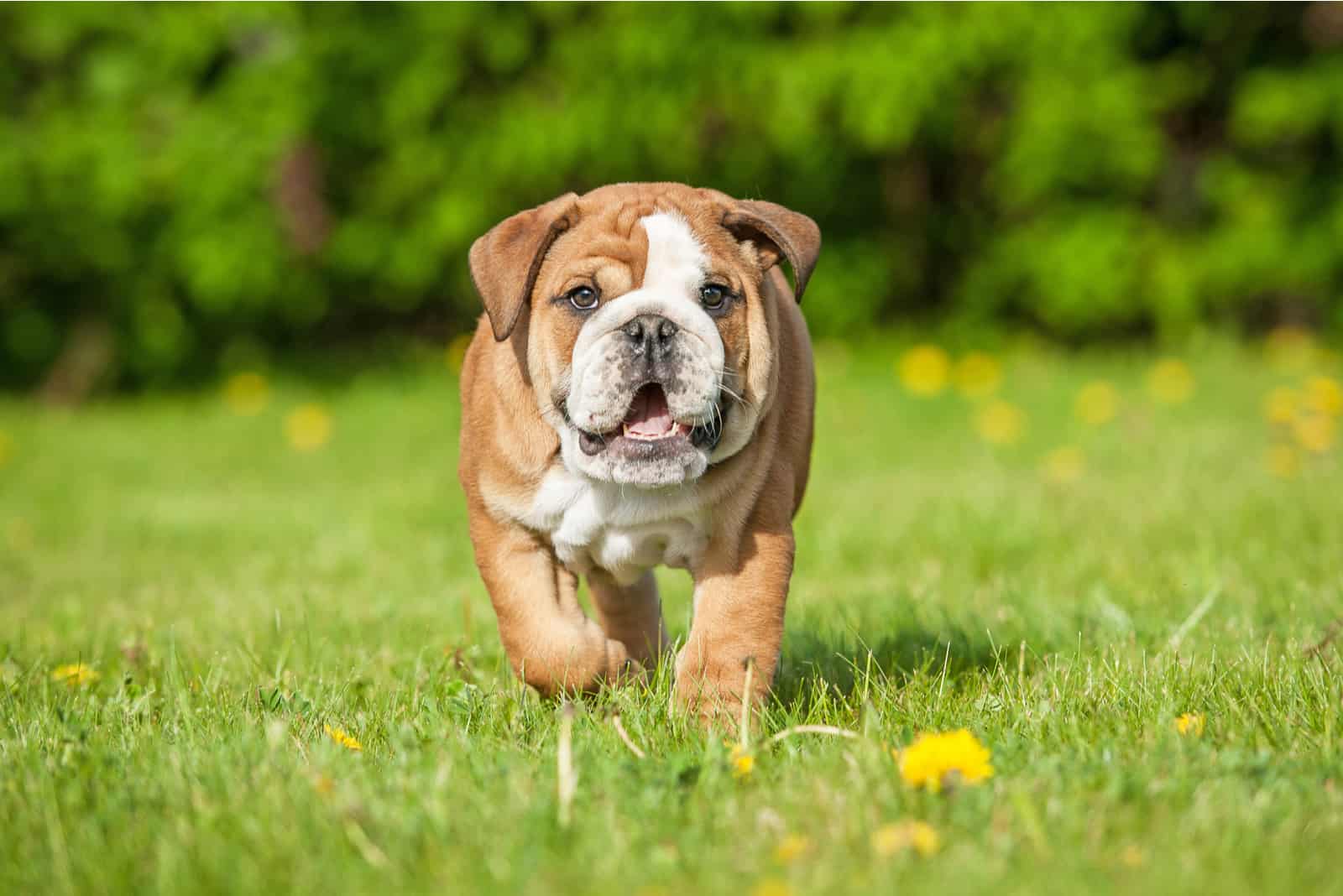
Let’s examine this breed in more detail to see how they appear today:
• Weight — Usually between 50 to 54lbs, with males being heavier than females.
• Height — They average between 16 and 17 inches in height at the withers (again, with the males being larger). You can check out the English Bulldog Growth Chart to find out more!
• Coat — Straight and short, with low grooming requirements. Colors include piebald, brindle, fawn, red, or white.
• Lifespan — The life expectancy for English Bulldogs is between 8 and 10 years.
• Temperament — Very laid back, a great companion dog, very good with children. Known to be sweet and affectionate and will actively seek human company. Some of that old courage remains buried deep in their genes, so they make good watchdogs. Great with other pets but can be aggressive towards strange dogs.
• Exercise requirements — No more than 40 minutes per day, as they tire easily and can overheat quickly.
The Bulldog is a brachycephalic breed (it has a short, stunted face and snout) that causes a range of health issues, such as breathing problems, eye problems, and a tendency to overheat.
This also increases the likelihood of drooling and snoring.
They have loose, saggy skin with many folds and flaps, which need to be kept clean to reduce the chance of problems such as yeast infections and skin-fold dermatitis.
As with similar breeds, around 80% of bulldogs are delivered via C-section because their large heads may become lodged in the mother’s birth canal.
English Bulldogs are prone to other health problems such as hip dysplasia, a temporary dislocation of the hip due to the joint not being fully formed.
Several studies have shown that they are more likely to suffer from this condition than any other breed.
Besides the Bull-Pug, there are other interesting English Bulldog mixes. Take a look to make sure this is true!
The Pug
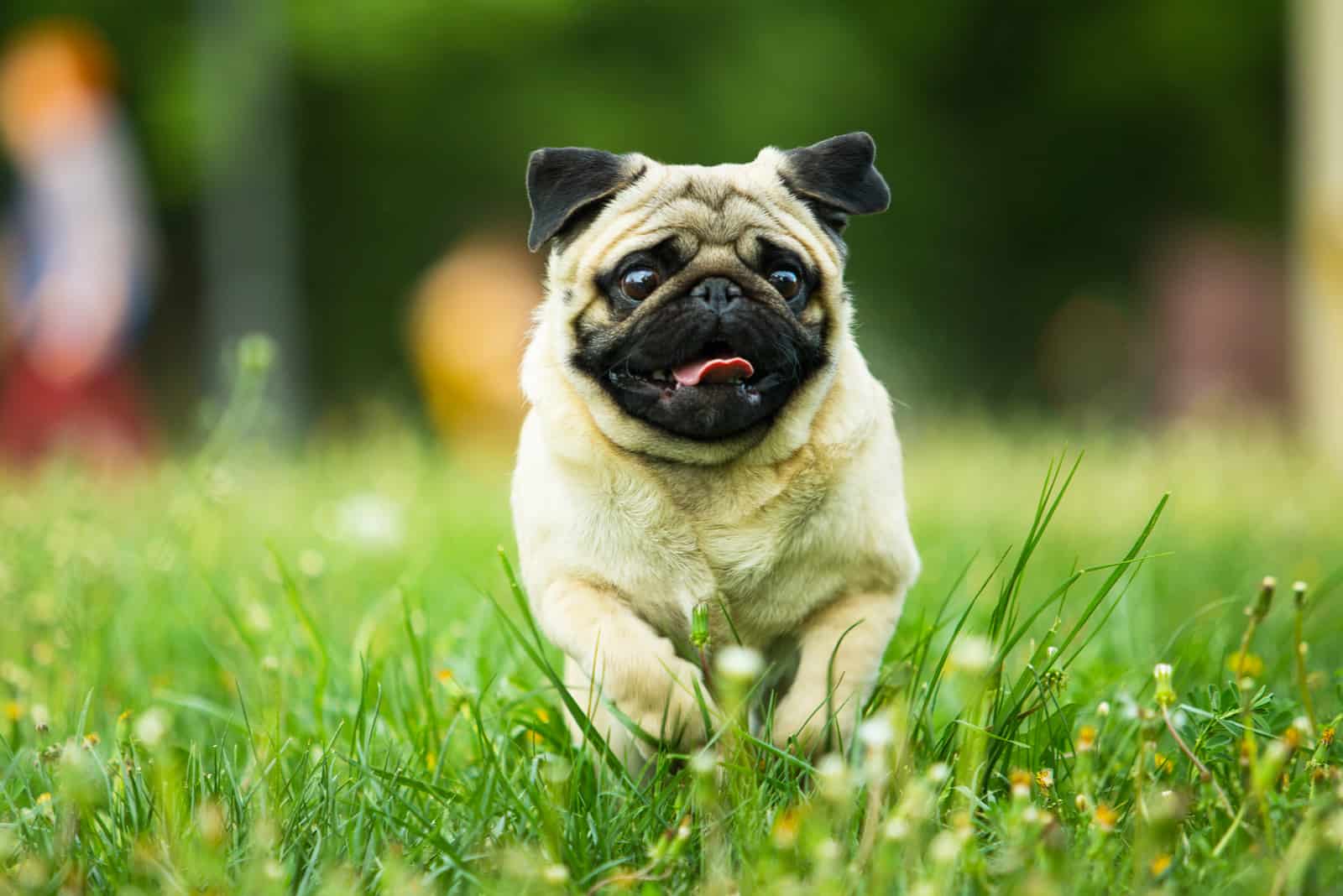
What can we say about these small dogs, except that they have earned a place in millions of hearts worldwide?
Their small size appeals to dog lovers everywhere, and those adorable little faces make them irresistible to all but the most hardened hearts.
But what do we know about their history and their health and care requirements?
While you might not think it’s important, the more you know about the parent breeds, the better prepared you will be when it comes to caring for your precious pup.
The ‘Pug Dog’ has a remarkably different history from the bulldog. Variations on the pug can be traced as far back as 2,000 years ago in ancient China!
Chinese emperors developed a liking for small breeds with flat faces (Shih Tzus, Pekingese, Pugs, and so on).
Dutch traders brought back some of these breeds in the 1500s, and legend has it that it became a favorite (and became a royal mascot!) in the court of William of Orange when one of these tiny dogs barked to warn him of an attack by Spanish soldiers!
When William and Mary took the British throne in 1689, their love for pugs sparked a fashion for this loveable breed in the UK that survives to this day.
There are many theories as to the name, but it could be connected with the Latin word pugnus, meaning fist, as this tiny dog’s face resembles a clenched fist!
Let’s take a look at some facts:
• Weight — Between 14 to 18lbs.
• Height — Between 11 and 12 inches.
• Coat — Short and flat, with moderate grooming needs. Colors are usually black, fawn, silver fawn, or apricot fawn.
• Lifespan — Generally between 12 to 15 years.
• Temperament — Another ‘companion dog’ that is quite laid back, though can be playful and even a bit stubborn at times. They are robust enough to play happily with children and are usually okay with other dogs. Pugs are known to be charming, and they rarely show aggression. They are sensitive to mood changes and will shadow you around the home, eager to please you.
• Exercise requirements — Given their size, they don’t need much more than 20 minutes a day, but this is important as they are prone to obesity.
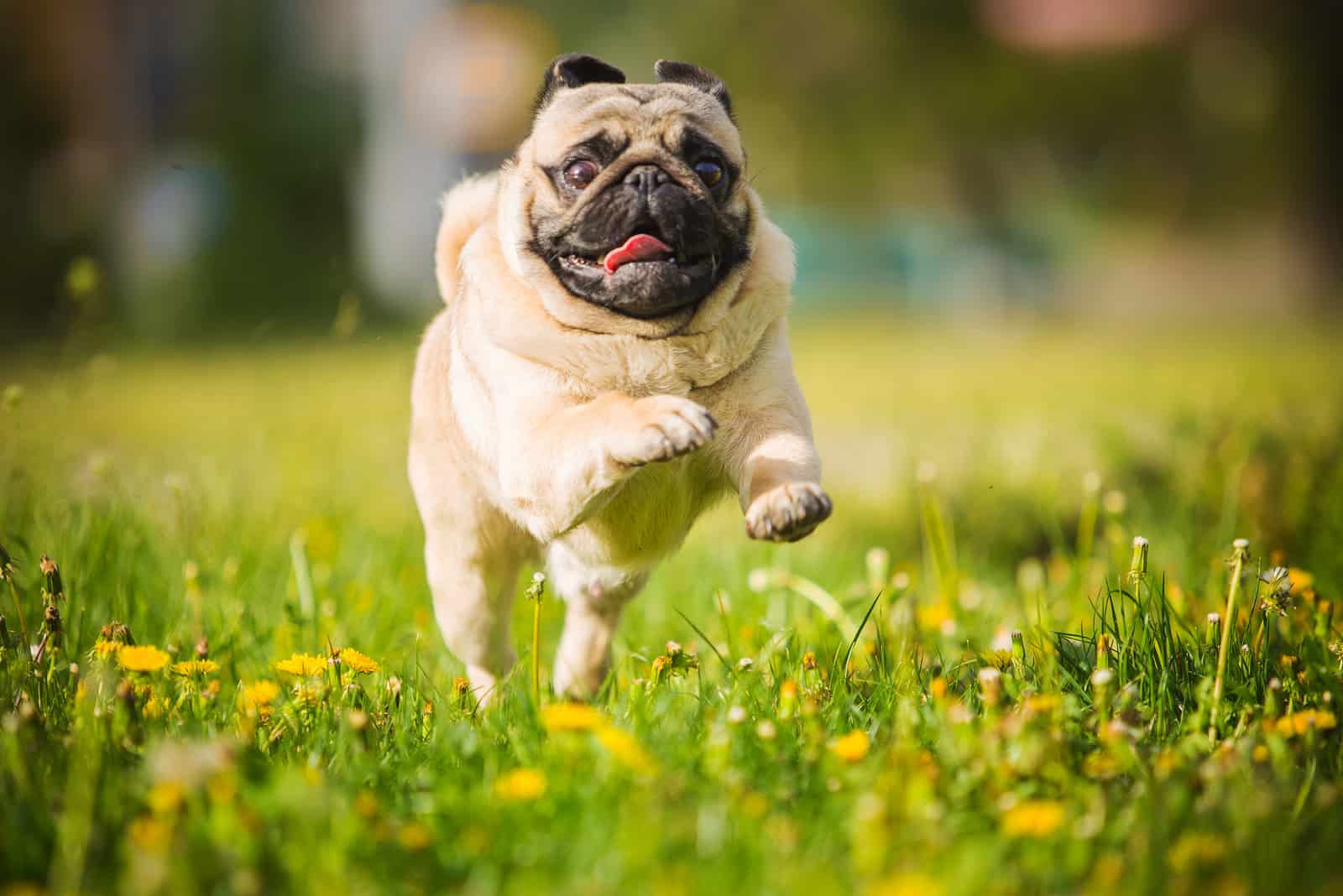
Pugs have the breed motto multum in parvo, meaning ‘a lot in a little,’ which hints at the fact that you get a lot of personality in such a small package!
Like the bulldog, this breed suffers from a range of health problems, some of which are related to them being brachycephalic.
This makes them prone to overheating and breathing problems, and they don’t take well to hot, humid climates.
‘Reverse sneezing’ is another result of brachycephalism because of their elongated palate.
When they become excited, you may think they are gasping and snorting, but this is a condition called pharyngeal gag reflex, caused by fluids or some kind of debris becoming lodged under the palate, which irritates the throat or restricts their breath.
While it isn’t usually harmful, it is good to be aware of this condition and learn to recognize the signs. Identifying any potential health problem quickly, especially connected with breathing, is vital to getting the correct treatment.
A flat face and a lack of snout expose this breed to the risk of prolapse and serious eye injuries. Great care should be taken to avoid damage to the eyes, as prolapse can occur through a leash being too tight or by trauma to the neck and head.
While the eye can be pushed back into the socket easily, surgery may be required if prolapse occurs frequently.
Wrinkles and folds need to be kept clean (as with bulldogs) to avoid skin diseases and infections, since Pugs are prone to skin problems.
In addition, the pug is susceptible to demodectic mange, where parasitic mites (which exist on all healthy dogs) form colonies that grow out of control and cause skin infection.
Another, more serious, condition that can affect pugs is necrotizing meningoencephalitis (NME), an inherited disease that causes inflammation of the brain, which has no cure.
Hip dysplasia is also a common problem in this breed, which is listed as the second most affected. This is a genetic trait worsened by environmental factors and often leads to arthritis.
Now that we have learned all about these two breeds, we can look at the Bull-Pug to see how these traits might be passed on from the parents.
The Bull-Pug
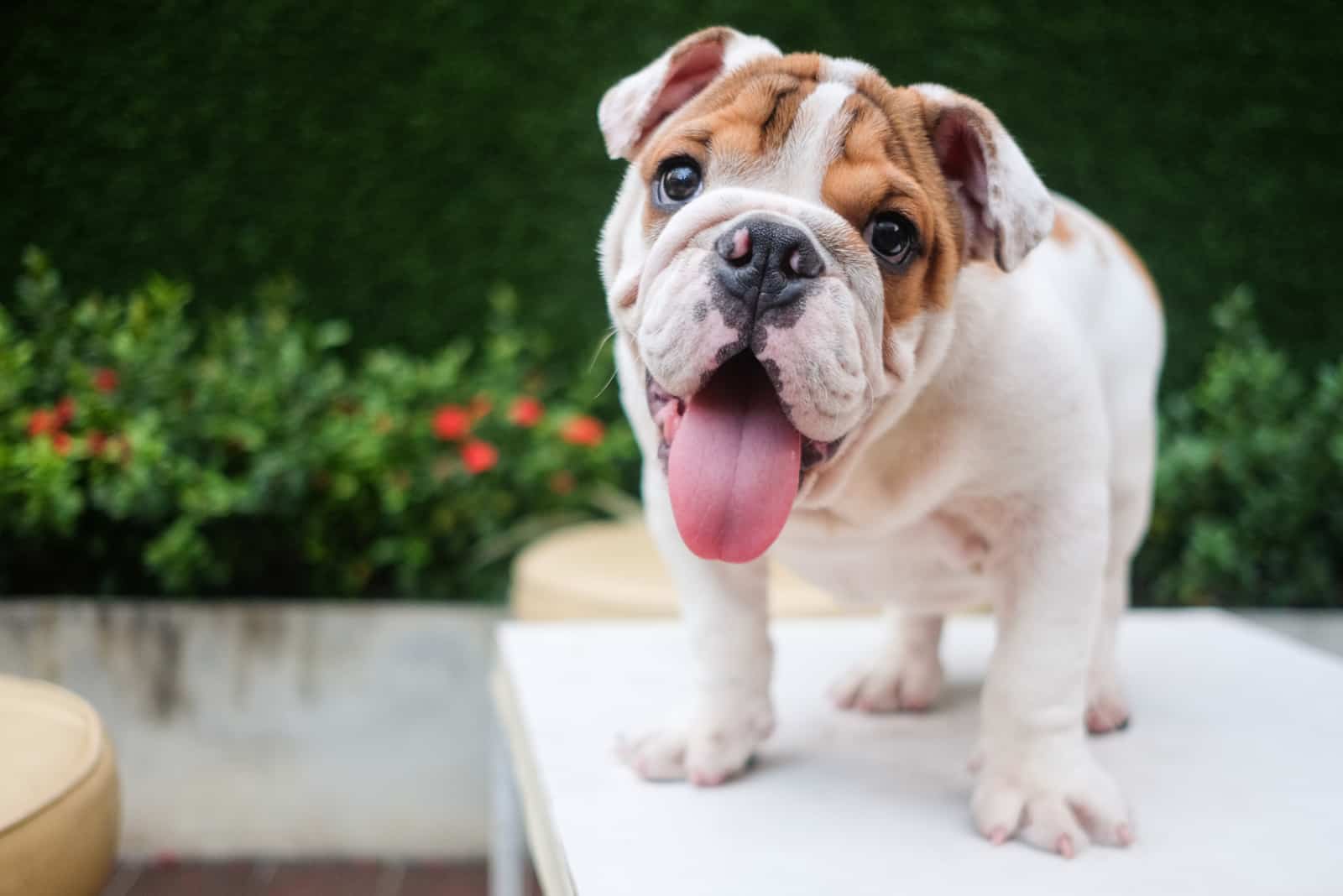
Also known as the Miniature English Bulldog, Miniature Bulldog, or Mini Bulldog, this designer breed has been around since at least the early 1980s, though no single breeder has claimed responsibility for producing the first ones.
Sometimes people refer to them as Toy Bulldogs, but this is incorrect. Toy Bulldogs were a breed from the 18th and 19th centuries produced by mating bulldogs with dwarf-sized bulldog puppies or French Bulldogs. This mixed breed is now extinct.
Mini Bulldog puppies are incredibly cute! The large, rounded head, soft folds of skin, and short sleek fur make them hard to resist.
They are stocky and solid with broad shoulders, black eyes, and a tail that curls back over the hips.
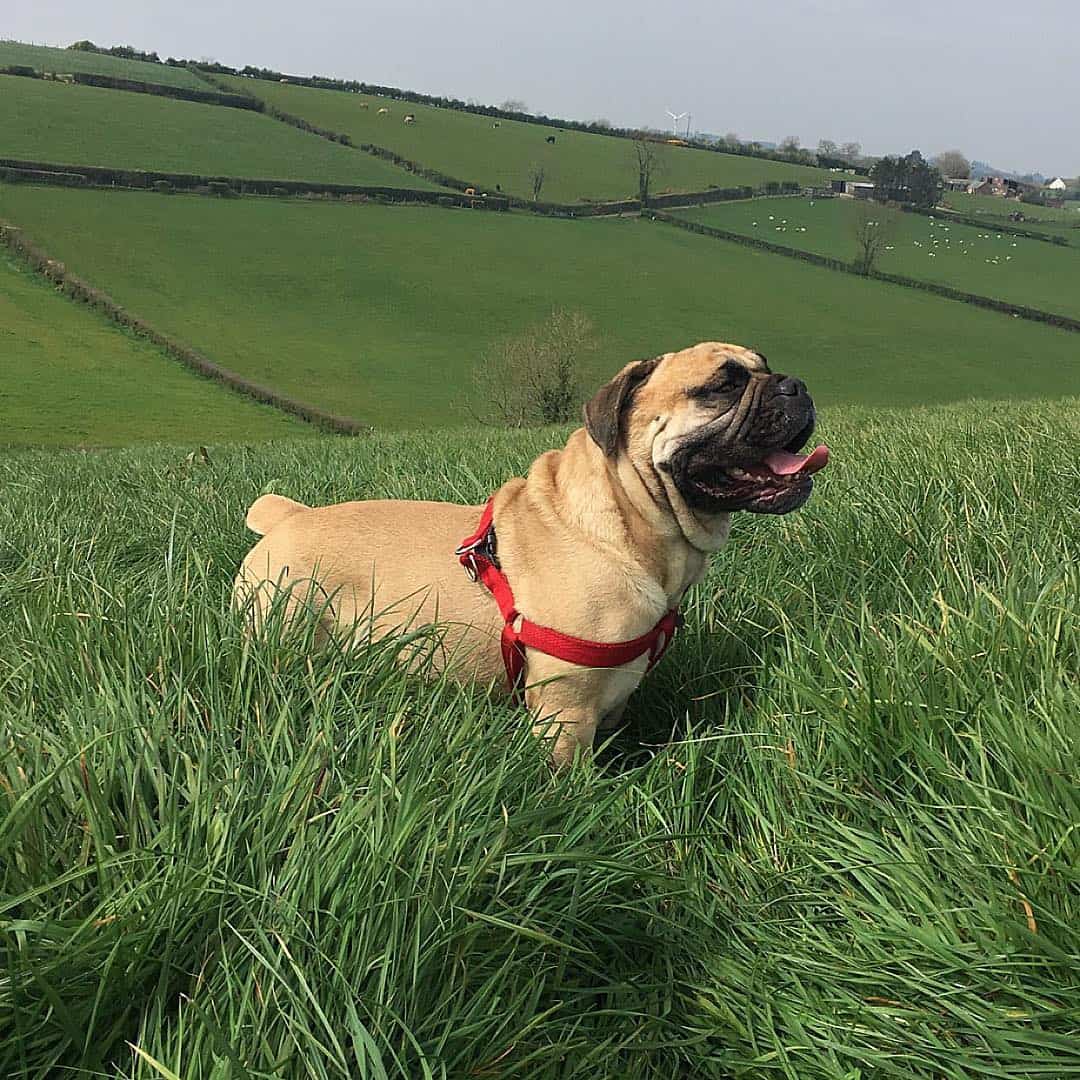
Photo from:@caroline_murphy97
Although it’s a smaller version of the Bulldog, some of the typical Bulldog characteristics don’t always show. Let’s examine some facts, as we did with the parents:
Weight — Between 20 and 45lbs, which may come as a surprise. Some people expect them to be more like the Toy Bulldog, but this is not the case. Pug-dogs are a medium-sized breed, with the male dogs being heavier than the female.
Height — Between 12 to 16 inches.
Coat — The coat is short, glossy, and fine and is easily managed. A brush once a week should suffice. They don’t shed much but are not classed as hypoallergenic. Colors include brindle, white, silver, fawn, and black.
Lifespan — They generally live for between 9 to 13 years, but this can be lengthened by ensuring that they have a good diet, plenty of exercise, and frequent health checks.
Temperament — As you might expect, they make excellent companion dogs. They are playful, affectionate, and patient with kids, though you might want to monitor them in case things get a bit rough (from either party!). Some males can show aggression to other male dogs, but you can overcome the problem if addressed early through socialization.
Exercise requirements — About thirty minutes a day is adequate, but take care in hot weather. Though they love to be outdoors, they will be happy to laze about the house all day if you let them! A good run or play in the park or backyard each day will keep them fit and healthy.
This breed can be difficult to housetrain. In fact, they can be stubborn when it comes to any kind of training, which is why you would be wise to start obedience training early.
Once the message gets across, though, they tend to retain the information well, especially when encouraged by positive reinforcement (using rewards such as treats when they get something right) rather than harsh words.
Their size and temperament make them suitable for many different living arrangements, whether in town or country, a large house or small apartment.
They are pretty laid back, and though they love being around you, they won’t usually make much of a fuss at being left alone for a while.
Sadly, they inherit many of the parent dog’s health problems, as well as having a few of their own.
As you’d expect, they are brachycephalic, with a short snout, wide head, and flat face. This causes them the same sensitivity to climate and heat as their parents.
Overheating can be a serious problem, so if you live in a warmer climate, be careful not to overdo it at playtime and always make sure they have fresh, clean water.
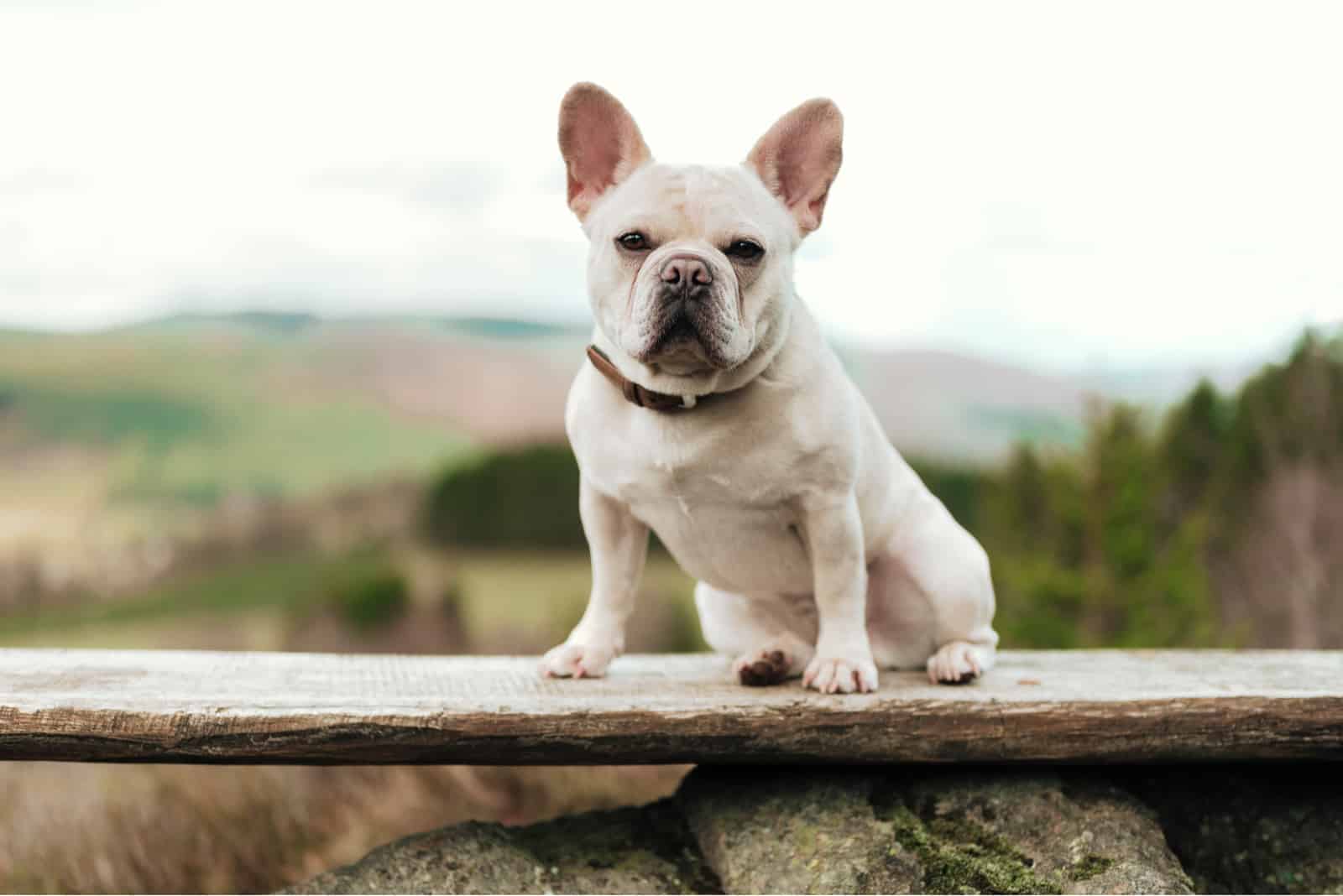
Other conditions you might see are as follows:
• Sick sinus syndrome — Nothing to do with the nose, as you might expect! This is a condition where the heart’s natural ability to regulate itself is compromised. The heart can suddenly stop beating, and the dog may collapse.
• Subaortic stenosis — This is a membrane that causes a blockage beneath the aortic valve.
• Pulmonic stenosis — Similar to the above condition, but blocking the valve that lets blood flow from the heart to the lungs.
• Dental disease — Tooth and gum problems can cause infections that can affect other organs, including the heart, if not treated quickly.
• Dermatitis — The skin folds become infected and sore if not kept clean and dry.
• Allergies — Pollen, dairy, and different kinds of meat protein may cause an allergic reaction.
• Demodectic mange — As mentioned above, this is caused by colonies of mites.
• Hip dysplasia — A common problem, but a painful one that needs attention.
• Cherry eye — This is a prolapsed gland connected with an inflamed third eyelid and tear gland.
These are a few of the more common health issues that your Bull-Pug might face. If you are intending to take on the responsibility of owning one, then it is best to be aware of all the possibilities so that you can be prepared.
To limit the chances of illness, your dog will need care and attention.
Use only good quality puppy food and progress to a suitable adult feed when they are old enough. Supplement this with homemade food if you wish, using things like sweet potatoes, spinach, carrots, apples, mangoes, edamame, plantains, artichokes, and bananas.
Brush them once a week and give them a bath each month or so (unless they give you a reason to do so sooner!), and always keep those folds and flaps clean and dry to avoid dermatitis.
Use a grooming glove or soft-bristle brush, as their coat is thin, and they’ll really feel those bristles.
Book them in for a health check a couple of times a year, and keep those teeth clean!
With a care routine like this, they stand a good chance of staying healthy and bringing joy to your life for a long time to come.
Also, make sure to keep in touch with current Bulldog and Pug price range, as their crossbreed will usually range somewhere in between.
Read Next: 50 Pug Mixes: Cutest Crossbreeds You’re Going To Love!
